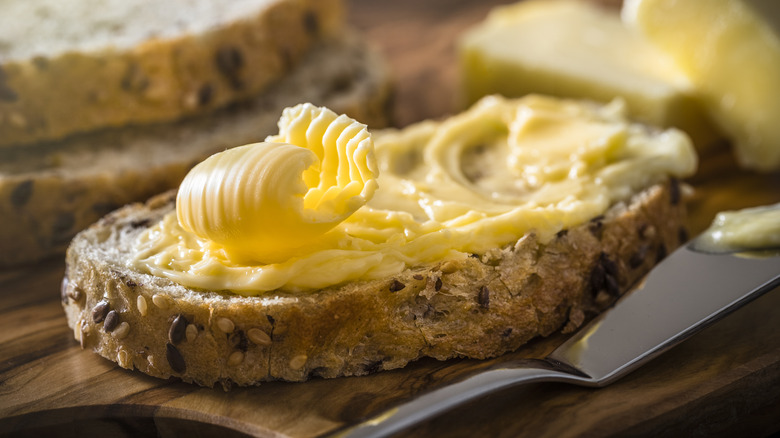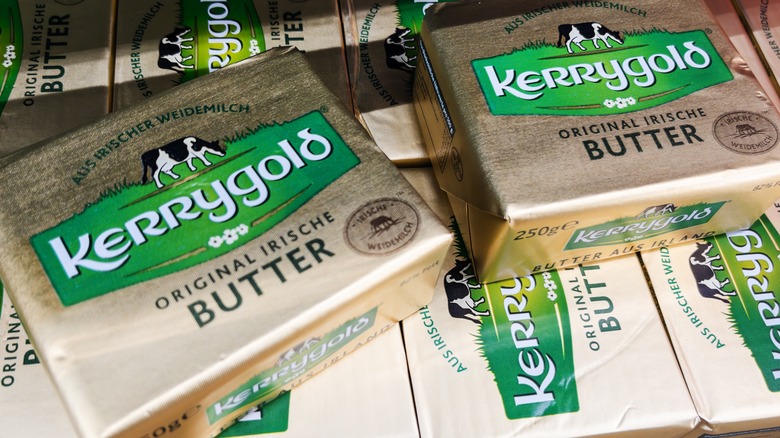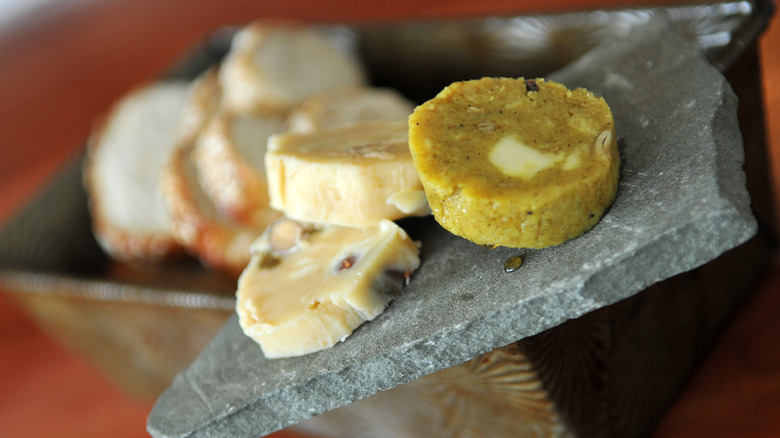Why Does Restaurant Butter Taste So Much Better Than Store-Bought?
Many people would agree that food tastes better when someone else cooks it, which is at least part of the reason why a meal at a restaurant can be so much more satisfying than cooking and eating at home. Even the humble bread course that comes out before your food in a restaurant often tastes miles better than eating bread in your own kitchen, especially when slathered in the soft, supple butter served alongside it.
It does not make sense for something as simple as bread and butter to taste so much better in a restaurant, but chefs know the subtle ways to change something as simple as butter into something extraordinarily delicious. Minor steps such as bringing butter to room temperature, whipping butter before serving, and seasoning butter are how restaurants take their butter over the edge. You can take similar steps in your own kitchen to make your butter a gourmet treat.
The type of butter and temperature matters
There are multiple varieties of butter available in grocery stores, and not just salted or unsalted varieties. European butters like Irish and French butter often contain more butterfat than the typical American brands, roughly 82% butterfat compared to just 80% in American varieties.
It may seem like a minimal difference, but fat often means more flavor so European varieties are richer and creamier. There are also cultured butters, in which the cream is treated with the same probiotics that make yogurt thick and tangy, lending a more complex flavor compared to regular butter. The ritzy New York restaurant The Modern relies on cultured butter to take its bread service to the next level.
Restaurants often use one of these types of butter because they have so much more flavor than regular butter, but temperature is also an important factor here. Restaurants typically serve their butter at room temperature, which makes it easier to spread and melt into warm bread. Some take it a step further and whip their butter to make it airy and light, further facilitating spreadability.
Flavoring and seasoning butter
Proper seasoning can take any food from bland to over-the-top delicious, and butter is no exception. First and foremost it is important that your butter is properly salted to make it taste as good as a restaurant; unsalted butter is good for baking but not when eating it alone with bread. Even a pinch of flaky sea salt on top of a piece of buttered bread adds another layer of flavor.
Some more upscale places may choose to flavor their butter with herbs, spices, and further seasonings to make a compound butter. Compound butters can be savory when seasoned with things like garlic and herbs to top a grilled steak, or they can be sweet like the famed cinnamon-honey butter served at Texas Roadhouse.
Compound butters are endlessly customizable when made at home, and easily take boring old butter to restaurant-worthy. Use a few of these secrets and your butter will taste just as good as your favorite restaurants.


